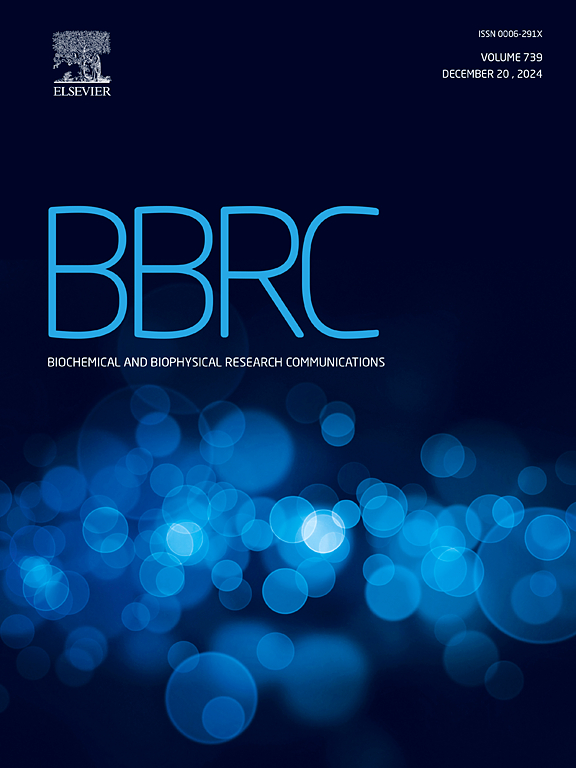Functional analysis of AtTX11/12 TIR-domain proteins identifies key residues for basal and temperature-insensitive growth inhibition
IF 2.5
3区 生物学
Q3 BIOCHEMISTRY & MOLECULAR BIOLOGY
Biochemical and biophysical research communications
Pub Date : 2025-01-17
DOI:10.1016/j.bbrc.2025.151357
引用次数: 0
Abstract
Plant Toll/interleukin-1 receptor (TIR) domains function as NADases and ribosyl-transferases generating second messengers that trigger hypersensitive responses. TIR-X (TX) proteins contain a TIR domain with or without various C-terminal domains and lack the canonical nucleotide-binding site and leucine-rich repeat domain. In a previous study, we identified an Arabidopsis thaliana activation-tagging line with severe growth defects caused by the overexpression of the AtTX12 gene. Here, we investigated the domains and specific amino acid residues required for the growth inhibition activity of AtTX12 and its homolog AtTX11. C-terminal truncation analysis revealed that the AtTX12C173Δ mutant, lacking 30 C-terminal amino acids, retained partial activity, whereas the C163Δ, lacking 40 amino acids, lost activity entirely indicating that the fifth α-helix within the TIR domain is critical for activity, while the sixth α-helix in the extra domain is dispensable. The substitution mutagenesis revealed that residues essential for enzymatic activities (E79 for NADase, C76 for 2′,3′-cAMP/cGMP synthetase), self-association (H25, E43, K142/G144, K150), and undefined roles (I97) were crucial for growth inhibition activity with varying effects. Temperature sensitivity tests revealed that the AtTX12 N36D mutant, which exhibited moderately strong growth inhibition activity at normal temperatures, became inactive under high-temperature conditions in which Enhanced Disease Susceptibility 1 (EDS1) is almost non-functional. In contrast, wild-type AtTX12 retained activity under elevated temperatures, implicating N36 in maintaining temperature-insensitive functionality. Furthermore, a slightly reduced growth inhibition phenotype induced by AtTX12 overexpression in the eds1 mutant was consistently observed under both normal and high temperatures. These results suggest that AtTX12-mediated growth inhibition integrates EDS1-dependent (temperature-sensitive) and EDS1-independent (temperature-insensitive) pathways. Our findings suggest that attenuated AtTX11/12 mutants could be used to optimize the growth-defense trade-off, enhancing plant defense with minimal growth penalties.

求助全文
约1分钟内获得全文
求助全文
来源期刊
CiteScore
6.10
自引率
0.00%
发文量
1400
审稿时长
14 days
期刊介绍:
Biochemical and Biophysical Research Communications is the premier international journal devoted to the very rapid dissemination of timely and significant experimental results in diverse fields of biological research. The development of the "Breakthroughs and Views" section brings the minireview format to the journal, and issues often contain collections of special interest manuscripts. BBRC is published weekly (52 issues/year).Research Areas now include: Biochemistry; biophysics; cell biology; developmental biology; immunology
; molecular biology; neurobiology; plant biology and proteomics

 求助内容:
求助内容: 应助结果提醒方式:
应助结果提醒方式:


